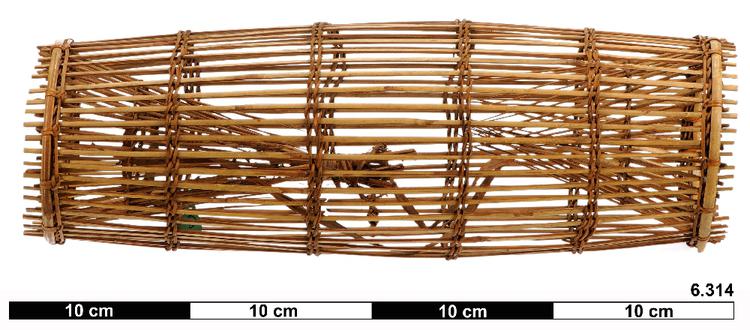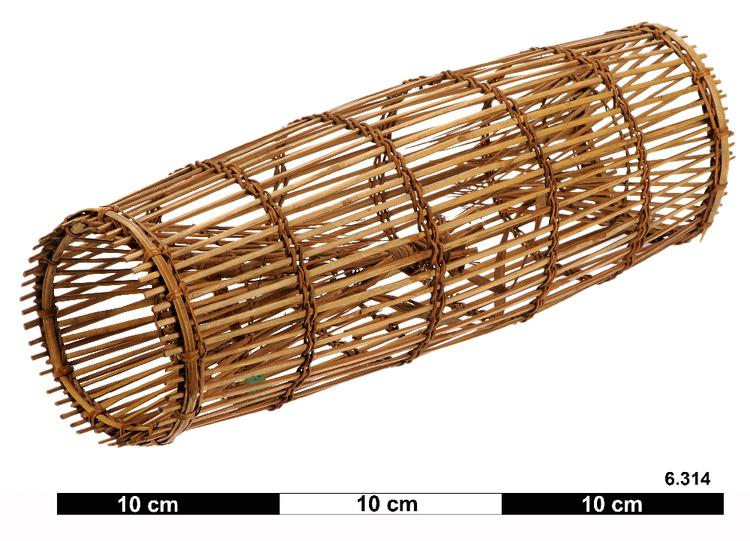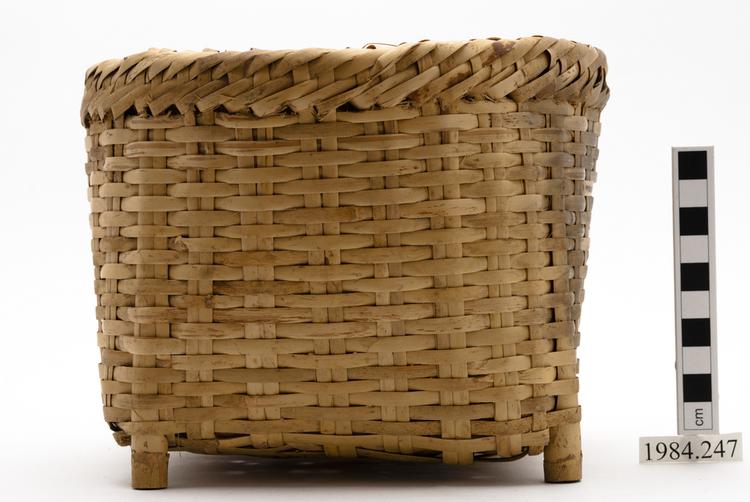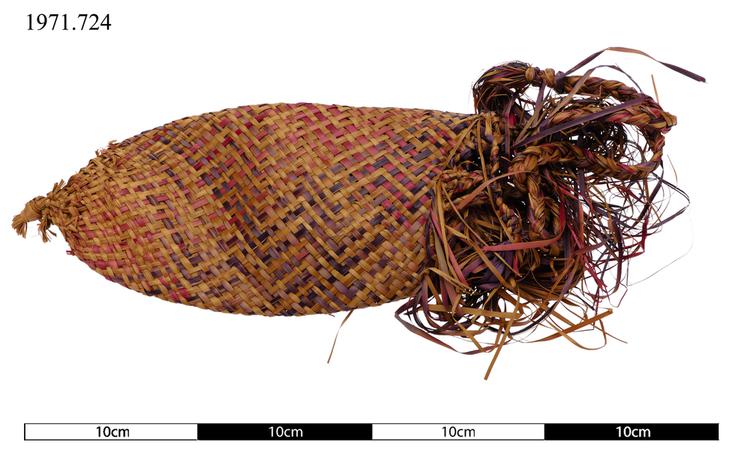

No return fish trap made of vegetable fibre and wood.
Non-Return Fish Trap, Gulf Province, Papua New Guinea. This little fish trap from the Papuan Gulf on the southern coast of New Guinea provides an interesting example of people from different parts of the world coming up with the same solution to a similar problem. The small sticks making up the trap’s narrow conical entrance are flexible enough to let the fish in at the bait inside, but too stiff to let it back out again. With subtle differences, traps for fish and shellfish take this form all over the world, showing that some inventions are inspired as much by common sense as they are by the genius of any particular individual. In the Gulf Province, traps such as this are laid down attached to a stone weight, somewhere in the side creeks of a larger river, where currents are slower and fish are more likely to browse after a smell. It is often the responsibility of children to find the bait for these traps, and of women to fill, set and check them. Wood, vegetable fibre. Late 19th Century. Collected by Prof A. C. Haddon in 1888-1889, and presented to the Horniman Museum in 1906.





